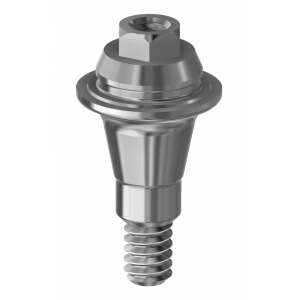Multi-unit & Uniabutments for dental implants
DESS Dental Multi-unit abutments are compatible with most implant systems on the market. Discover all the connections and their features. On the other hand, transepithelial abutments act as a connection between the implant and the dental prosthesis in multiple restorations. In addition, they have several features that improve the comfort and precision of treatment and prevent secondary complications.
DESS® Multi-unit 100% compatible with Multi-unit® abutments
DESS® Dental Multi-unit abutments are the best solution for multiple direct screw-retained or mixed restorations with the combined use of straight or angled interfaces, even in cases of large divergence between implants. It is also possible to screw the DESSLoc® system directly into a Multi-unit® for removable dentures.
Its design allows an optimal fit between the abutment and the implant connection, ensuring a correct insertion axis of the prosthesis-implant connection. In addition, they are incorporated in the free CAD/CAM libraries of DESS® for the Exocad®, 3Shape® and Dental Wings® systems, facilitating the free design of frameworks.
Multi-unit abutments for implants of the highest quality and at the best price
DESS® Dental Multi-unit abutments are an immediate loading solution specially designed for direct screw-retained multiple restorations of both 4 and 6 implants, as well as bridges and on bar and hybrid dentures. They are made of Titanium Grade V ELI and some connections include the DLC (Diamond Like Carbon) coated screw for optimal retention and increased preload.
• Straight Multi-unit abutments: for clinical restorations using implants with a divergence of up to 40°
• Angled Multi-unit abutments: Available in 17° and 30°, they are the perfect solution for restorations with divergence, those clinical situations where a correction of the treatment angulation is necessary
All DESS® Multi-unit abutments are supplied with a transporter to make it easier for the dentist to place the abutment in the mouth. The conveyor for angled abutments is designed to act as a contact point with the screw to prevent it from falling out during placement.


















